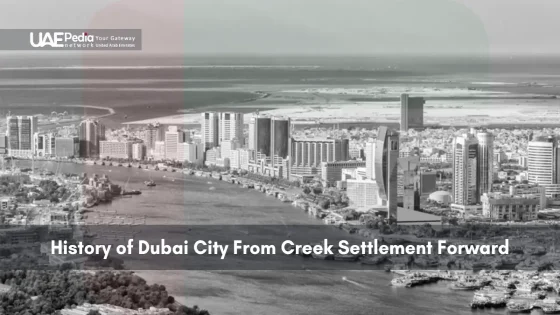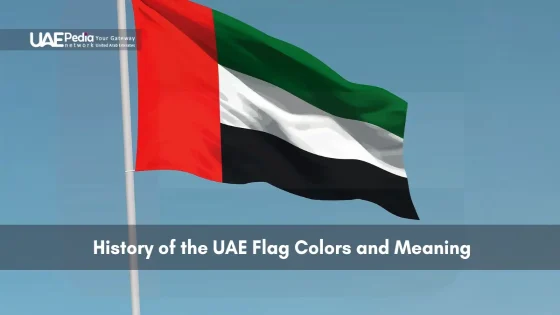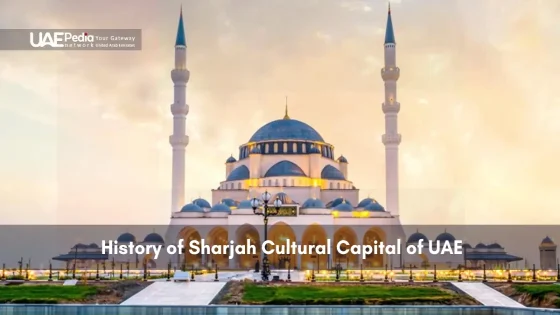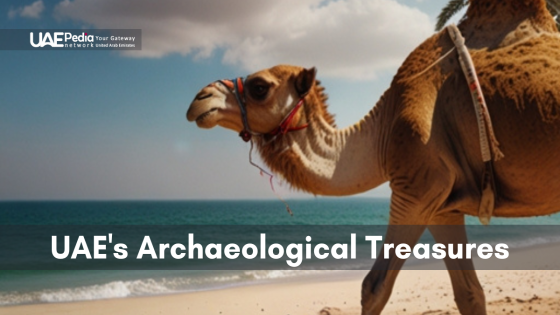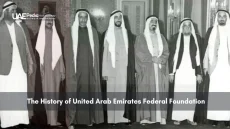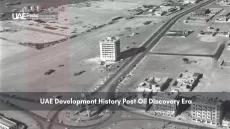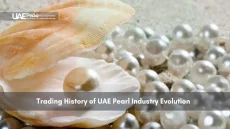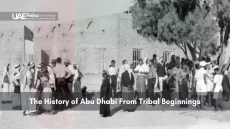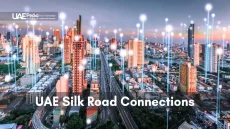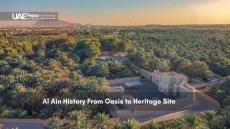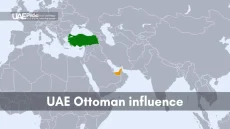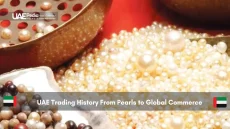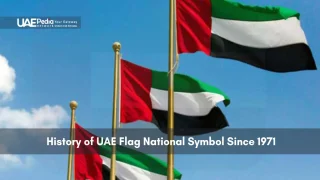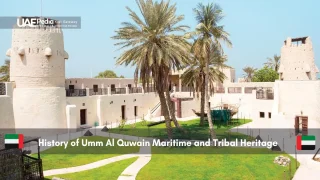What if we told you a modest creek once fueling pearl divers and fishermen now anchors the world’s busiest international airport? This waterway didn’t just shape Dubai—it rewrote the rules of desert survival.
Long before skyscrapers pierced the clouds, 16th-century Venetian trader Gasparo Balbi documented bustling markets along these shores. Arab geographer Muhammad al-Idrisi mapped its strategic position centuries earlier, hinting at why British forces later sought treaties here. This wasn’t just a sleepy port—it was a crossroads where cultures swapped spices, pearls, and big ideas.
The creek’s shallow waters demanded innovation. Locals built abras (traditional boats) to navigate shifting sandbanks, while merchants negotiated deals under palm-frond shelters. When regional conflicts disrupted trade routes, Dubai’s leaders doubled down on open markets and tax-free zones—a philosophy still shaping the Emirates today.
- Discover how saltwater survival skills built a global business hub
- See the creek through explorers’ eyes with rare 1500s maps
- Learn why strategic deals transformed desert life into urban triumph
Early Foundations: Life Around the Creek and Nomadic Beginnings
Imagine uncovering 9,000-year-old mangrove roots beneath today’s bustling metropolis—proof that this region’s story begins long before modern skylines. These ancient wetland ecosystems along the arab emirates coast weren’t just scenery. They were life-support systems, filtering water and sheltering early communities.
The Significance of the Mangrove Remains (7000 BCE)
Archaeologists found preserved mangrove wood dating to 7000 BCE—older than Egypt’s pyramids. These salt-tolerant trees reveal a wetter climate where hunter-gatherers fished and foraged. “The mangroves acted like ancient supermarkets,” notes Dr. Rania Hassan, an Emirati environmental historian. “Everything from food to building materials came from these swamps.”
Transition from Nomadic Herding to Agricultural Practices
By 2500 BCE, date palms began sprouting near creek settlements. Families traded wandering for farming, using seasonal floods to irrigate crops. This shift birthed the first permanent villages in what would become a global crossroads.
| Nomadic Era | Agricultural Era | Key Innovations |
|---|---|---|
| Mobile goat/camel herding | Date palm cultivation | Irrigation channels |
| Temporary shelters | Mud-brick homes | Food storage pits |
| Oral trade agreements | Recorded exchanges | Clay tokens for tracking |
This creek-side city blueprint—water access + trade routes—would later define the arab emirates’ role in the ancient world. Next time you stroll Dubai’s waterfront, remember: those skyscrapers stand on 9 millennia of clever adaptation.
Cultural and Economic Roots in Pre-Islamic Times
Ever wonder how ancient traders turned desert sands into gold? Long before oil reshaped the landscape, copper and incense fueled a thriving exchange network. Archaeologists recently uncovered stone carvings near Hatta that reveal sun deities and sacred fire rituals—proof that spiritual life and commerce danced hand-in-hand here 4,000 years ago.
Local Worship and the Magan Civilization
The Magan people (modern-day Oman/UAE) didn’t just trade metals—they mastered it. Their smelters produced bronze tools shipped to Mesopotamia and the Indus Valley. “Copper was the oil of its time,” explains Dr. Leila Al-Mansoori, pointing to excavated workshops near Jebel Ali. Temples doubled as trade hubs, where merchants offered incense to local deities before sealing deals.
Three innovations from this era still echo in the emirate’s DNA:
- Water-smart mining techniques that later inspired oil extraction methods
- Barter systems using standardized weights—a precursor to modern free zones
- Cultural adaptability, blending Mesopotamian symbols with Arabian motifs
When you spot dhows unloading goods at Deira Wharf today, you’re witnessing a tradition older than the Silk Road. These early networks didn’t just move goods—they built the trust and infrastructure that let this emirate pivot effortlessly from copper to crude oil centuries later.
Introduction of Islam and the Middle Ages Transformation
Picture camel caravans glowing under crescent moons—not just carrying spices, but revolutionary ideas. The 7th-century arrival of Islam didn’t just alter spiritual practices here. It rewired entire trade networks, creating ripple effects still felt in the region’s development.
Trade Winds Shift Direction
The Umayyad Caliphate transformed regional commerce like ancient algorithm updates. They rerouted incense trails through strategic ports, boosting coastal settlements. “This was globalization 1.0,” says historian Dr. Amina Al-Farsi. “New banking systems and standardized measures made deals across continents possible.”
Cultural Currents Flow Deeper
Mosques became community hubs where mathematics met metaphysics. Three lasting impacts emerged:
- Architectural innovations like wind towers for natural cooling
- Expanded education through madrasas and libraries
- Ethical trade codes influencing modern economic policies
These changes didn’t just shape the Middle Ages—they laid groundwork for the region’s future economy. Next time you admire Dubai’s skyline, remember: those glass towers reflect sunlight first captured in medieval scholars’ astrolabes.
Evolution of the Dubai Creek Settlement
Think of Dubai Creek as a stubborn sapling that refused to stay small. By the 18th century, families clustered near its bends built watchtowers from coral stone. These structures doubled as trade posts and defense points—especially when tensions flared with Abu Dhabi over fishing rights. You can still spot their ruins near Al Fahidi Fort today.
British naval logs from 1822 reveal something surprising: this area hosted more ships than most Gulf ports. Sailors bartered Arabian coffee for Zanzibari spices while kids hawked fresh dates along the shore. “Every tide brought new faces,” wrote merchant Ahmed bin Khalifa in his diary. “Persian carpet weavers, Omani pearl divers, even traders from distant India.”
The 19th century reshaped the creek’s rhythm. When Abu Dhabi tightened control over inland routes, Dubai’s leaders countered by abolishing taxes on foreign boats. Smart move—by 1890, over 350 dhows docked here annually. Three factors fueled this boom:
- Natural deep-water channels (rare in the Gulf)
- Neutral ground for rival tribes to trade safely
- Shared governance between creek-side neighborhoods
Rivalry with Abu Dhabi wasn’t just about power—it sparked innovation. While neighbors focused on land, Dubai’s creek dwellers mastered maritime diplomacy. Their secret? Treat every incoming tide as a chance to rewrite the rules.
Dubai’s Flourishing Pearl and Fishing Trade
Long before black gold flowed, pearlers dove for nature’s hidden gems—each oyster a potential fortune. Venetian trader Gasparo Balbi marveled in 1580 at the “armada of wooden ships crowding the creek like seabirds at dawn.” This aquatic gold rush built the emirate’s first economic engine.
The Rise and Fall of the Pearling Industry
At its peak, over 1,300 pearling boats operated from the port. Crews spent months at sea, using tied stones to plunge 30 meters on single breaths. Balbi’s journals detail how divers sang work chants to pace their dangerous dives—a tradition preserved in modern Emirati music.
Three factors sank the industry by the 1930s:
- Japanese cultured pearls flooding global markets
- Great Depression crushing luxury demand
- Oil exploration offering safer livelihoods
The government responded swiftly. They shifted focus to fishing and trade infrastructure, transforming the port into a regional hub. Former pearl captains became shipping magnates, their navigational skills repurposed for new cargo routes.
| Pearling Era | Post-Pearl Economy | Key Adaptations |
|---|---|---|
| Dangerous free-diving | Mechanized fishing fleets | Ice storage factories |
| Seasonal income | Year-round trade | Customs regulations |
| Family-run boats | Corporate partnerships | Port expansion projects |
Today, the creek’s fishing dhows still haul in morning catches—a salty tribute to the grit that turned maritime hustle into global ambition. Next time you admire a pearl necklace, remember: those lustrous spheres once bankrolled skyscrapers.
Maritime Truces and Early British Influence
How did pirate-filled waters become safe trade routes? The answer lies in ink-stained treaties and naval diplomacy. By the early 1800s, British ships patrolled the Gulf, determined to protect their India-bound cargo. Their solution? A series of agreements that reshaped regional power dynamics.
British Treaties and the Suppression of Piracy
The 1820 General Maritime Peace Treaty wasn’t just paperwork—it was a game-changer. Tribal leaders signed agreements banning raids on British vessels. In return, the Royal Navy cracked down on coastal pirates. “Suddenly, merchants could sail without armed escorts,” notes historian James Onley. “That trust became Dubai’s secret sauce.”
Three critical shifts emerged during this time:
- Fortified watchtresses built along key trade routes
- Standardized dispute resolution for shipping conflicts
- Shared intelligence networks tracking weather and threats
| Pre-Treaty Challenges | Post-Treaty Solutions | Long-Term Outcomes |
|---|---|---|
| Frequent pirate attacks | British naval patrols | 90% drop in maritime raids by 1830 |
| Unregulated trade fees | Fixed port tariffs | Predictable costs for merchants |
| Clan-based justice systems | Joint tribunals | Fairer conflict resolution |
This stability became the building block for Dubai’s rise as a hub. British engineers helped map deeper channels, while local leaders invested in harbor upgrades. Over time, these collaborations transformed chaotic coasts into orderly ports—proof that strategic partnerships could outlast empires.
History of Dubai City: Formation and Rise of the Al Maktoum Dynasty
What if a single handshake reshaped a desert outpost into a global powerhouse? In 1833, Sheikh Maktoum bin Butti sealed a deal that would redirect the region’s destiny. His bold move from Abu Dhabi to the creek settlement marked more than a relocation—it sparked nine generations of visionary leadership.
From Tribal Agreement to Modern Governance
The shift from Al Abu Falasa clan rule wasn’t sudden. Through the 1840s, the Maktoums balanced Bedouin traditions with merchant needs. “We govern by listening to both the camel herder and the sea captain,” Sheikh Saeed bin Maktoum later declared. This philosophy fueled four decades of population growth, with the settlement doubling in size by 1880.
Three strategies defined those critical years:
- Protecting fishing rights while expanding pearling fleets
- Offering tax exemptions to attract foreign traders
- Building consensus through nightly majlis meetings
| Leadership Style | Economic Focus | Community Impact |
|---|---|---|
| Consensus-building | Maritime trades | Shared wealth |
| Open-door policies | Infrastructure | Population growth |
| Long-term vision | Education | Skilled workforce |
While oil discoveries later transformed the skyline, the Maktoums never abandoned roots. Today’s fishing harbors nod to this legacy—proof that true growth honors tradition while reaching for tomorrow.
Trade Expansion and the Birth of a Regional Hub
Picture a sunbaked marketplace where Persian carpet sellers haggled with Indian spice traders over cups of cardamom coffee. This vibrant scene became reality when Dubai declared its creek a tax-free zone in 1902—a masterstroke that turned a modest settlement into the Gulf’s busiest trading post. Merchants from Bombay to Bahrain flocked here, their dhows overflowing with textiles, dates, and yes, gleaming pearls.
Role of Merchants in Establishing a Free Port
Local pearl divers laid the groundwork without knowing it. Their diving networks became trade routes, while their credit systems evolved into modern banking. “We didn’t just sell pearls—we sold trust,” remarked merchant Ali Al-Sharif in 1938. His family later converted pearl warehouses into the first tourism guesthouses along Deira’s waterfront.
Three innovations fueled this transformation:
- Customs exemptions for foreign goods (sparking a 300% trade surge by 1910)
- Shared storage facilities reducing costs for small traders
- Multilingual contract templates bridging cultural gaps
| Pearl Economy (Pre-1900) | Free Port Era (Post-1902) | Lasting Impact |
|---|---|---|
| Seasonal income cycles | Year-round commerce | Stable economic growth |
| Dangerous diving practices | Safer cargo shipping | Workforce diversification |
| Local barter systems | International currencies | Global financial integration |
Today’s glittering tourism hotspots owe much to those early risk-takers. The same creek that once hosted pearl auctions now welcomes cruise ships—proof that smart settlement policies can turn regional hubs into global icons.
Diplomacy, Treaties, and the Trucial States Era
Ever negotiated a business deal while fending off pirates? That was daily life along the dubai creek in the 1800s. Tribal leaders like maktoum bin butti faced a tough choice: protect their shores or open them to global trade. Their solution? Ink-stamped agreements that turned rivals into partners.
The 1820 General Maritime Peace Treaty didn’t just stop raids—it created a diplomatic playbook. Bin saeed maktoum later used these frameworks to negotiate with British envoys, securing protections for merchant ships. “We traded spears for signatures,” noted pearl captain Yusuf Al-Habshi in 1843. “Every treaty made the creek safer for our children’s dhows.”
Three game-changing outcomes emerged:
- Shared naval patrols cut pirate attacks by 80% within a decade
- Standardized trade tariffs attracted Persian and Indian merchants
- Conflict resolution councils replaced clan feuds
By 1892, over 60% of Gulf trade flowed through the dubai creek. Maktoum bin butti’s successors built watchtowers doubling as customs offices—early proof that security drives commerce. Learn more about this transformative period in our deep dive into the Trucial States era.
| Pre-Treaty Challenges | Post-Treaty Wins | Key Figures |
|---|---|---|
| Unpredictable raids | Protected shipping lanes | Bin saeed maktoum |
| Shifting alliances | Stable partnerships | British diplomats |
| Localized trade | Global connections | Persian merchants |
These diplomatic moves transformed the dubai creek from a pirate haunt into a living boardroom. Today’s cargo ships glide past treaty-signing spots—silent witnesses to deals that built a trading empire.
The Impact of Oil Discovery on Economic Growth
What transforms a dusty port into a metropolis? For this region, the answer arrived in 1966—black gold gushing from desert wells. Sheikh Rashid bin Saeed Al Maktoum saw beyond the immediate windfall. “We’re not selling oil,” he famously declared. “We’re buying time to build something lasting.”
Oil’s Role in Transforming Infrastructure and Urban Development
The first oil exports funded bold moves. Port Rashid’s construction tripled shipping capacity by 1972. Runways at Dubai International Airport stretched to welcome jumbo jets. Maktoum bin’s successors channeled revenues into schools and hospitals, ensuring growth reached every neighborhood.
Three projects changed everything:
- Dubai Drydocks (1979), turning the creek into a global ship repair hub
- Jebel Ali Free Zone (1985), attracting multinational corporations
- Al Shindagha Tunnel (1975), the Gulf’s first underwater road link
Bin Saeed’s team balanced ambition with foresight. They allocated just 20% of oil income to immediate needs, banking the rest. This strategy funded highways before traffic jams existed and sewage systems before populations boomed. Today’s glittering skyline? It’s built on 1960s blueprints drawn with oil-stained fingers.
Modernization Efforts and Strategic Urban Planning
What if blueprints could whisper stories of both tomorrow and yesterday? Sheikh Saeed Maktoum answered this question by weaving ancestral wisdom into concrete and steel. When oil revenues began flowing, his team faced a critical choice: erase the past or let it guide the future. Their 1971 masterplan revealed the answer—a city where wind towers inspired skyscraper cooling systems, and ancient trade routes shaped highway networks.
The Al Shindagha revitalization project became a case study in balance. Workers preserved coral-stone homes while burying power lines underground. “Growth without roots is just glitter,” Sheikh Saeed Maktoum remarked during the 1985 Creek expansion. Three principles defined this era:
- Reusing traditional building materials in modern structures
- Designing public spaces around historic gathering spots
- Training engineers in both Bedouin water systems and smart tech
Bin Butti’s 19th-century governance model resurfaced in surprising ways. Neighborhood councils mirrored his majlis system, ensuring community voices shaped zoning laws. This approach turned potential clashes between old souks and new malls into collaborations—spice traders now operate beside tech startups in hybrid spaces.
Dubai’s skyline tells a secret: those glass towers stand on foundations of adaptive reuse. From the strategic growth timeline launched in 1990 to today’s sustainable city projects, every innovation nods to the creek’s legacy. Sheikh Saeed Maktoum’s greatest triumph? Making “progress” mean honoring yesterday while building tomorrow.
From a Market Town to a Global Trading and Tourism Hub
Ever watched a desert bloom into a metropolis? The 20th century turned sands into gold—literally and metaphorically. While neighboring regions clung to tradition, this emirate rewrote its destiny through shrewd port expansions and tax-free experiments. Population numbers tell the tale: from 20,000 residents in 1940 to over 200,000 by 1990, fueled by opportunities gleaming brighter than bullion.
Ports, Policies, and Precious Metals
Port Rashid’s 1972 opening marked a turning point. Its deep-water docks could handle supertankers, while Jebel Ali Free Zone (1985) lured global firms with 100% foreign ownership. Gold souks adapted too—merchants who once weighed nuggets by hand now process 40% of the world’s physical gold trade. “We didn’t just sell metal,” recalls trader Rajesh Mehta. “We sold trust in a place where deals crossed continents before breakfast.”
Three factors supercharged this growth:
- Tax-free zones offering 15-year corporate holidays
- Airport expansions connecting 140+ destinations by 1999
- Gold refining complexes cutting processing costs by 60%
The population surge brought challenges. Workers from 150 nations required housing, sparking high-rise innovations. Yet the creek’s spirit endured—modern abras still ferry commuters past skyscrapers where pearl stores once stood. Today’s glittering malls? They’re just souks with air conditioning and escalators.
Iconic Architectural Projects and Ambitious Cityscapes
What if skyscrapers could whisper tales of ancient souks? Dubai’s skyline answers with steel and glass, where the Burj Khalifa’s spire mirrors the masts of dhows that once crowded the creek. These structures aren’t just buildings—they’re storytellers bridging centuries of trading grit and futuristic vision.
Engineering Marvels Meet Cultural Roots
When the Burj Khalifa pierced the clouds in 2010, it didn’t just break height records. Its design borrowed from desert flowers and Islamic geometric patterns. “We wanted the world’s tallest building to feel deeply Emirati,” explains architect Adrian Smith. The same year, Palm Jumeirah’s final frond completed a 17-year project that reshaped the country’s coastline—and global perceptions.
Three ways these projects honor the past while innovating:
- Burj’s triple-lobed footprint echoes traditional wind towers
- Palm Islands’ breakwaters mimic natural coral reefs
- Gold-themed interiors nod to historic souks
| Traditional Feature | Modern Adaptation | Year Introduced |
|---|---|---|
| Wind towers | Burj’s spire ventilation | 2010 |
| Coral trading | Artificial reef construction | 2006 |
| Gold markets | Dubai Gold & Diamond Park | 2001 |
These landmarks transformed the country into a canvas for audacious ideas. Sheikh Mohammed bin Rashid put it best: “We build towers not to touch the sky, but to show how high our people can reach.” From pearl divers to crane operators, every generation here redefines what’s possible.
Next time you gaze at the Burj’s LED-lit façade, look closer. Those dancing lights? They’re modern versions of Bedouin campfires—guiding today’s global traders just as flames once guided desert caravans.
Leadership and Vision: Shaping Dubai’s Future
Visionary leadership doesn’t just steer ships—it charts new oceans. When Sheikh Rashid bin Saeed Al Maktoum took charge in 1958, he faced a crossroads: coast on oil wealth or bet big on tomorrow. His gamble birthed the emirates’ most daring projects, from Port Rashid’s mega-docks to the World Trade Centre’s 39 floors. But true genius emerged in how he prepped for life after crude.
Blueprint for Tomorrow, Built Today
Sheikh Mohammed bin Rashid didn’t inherit a throne—he inherited a mindset. Launching Dubai Internet City in 2000 (pre-broadband boom) seemed risky. Yet this tech oasis now houses Google and Microsoft. “Infrastructure isn’t concrete—it’s courage,” he declared during the 2008 financial crisis, greenlighting the Burj Khalifa’s final push.
Three leadership hallmarks define their eras:
- Emirates-wide education reforms creating Arabic AI systems
- Public-private partnerships funding 70% of metro expansions
- Tourism drives preserving heritage sites alongside futuristic museums
| Leader | Signature Project | Lasting Impact |
|---|---|---|
| Sheikh Rashid | Dubai Drydocks (1979) | Global maritime repair hub |
| Sheikh Mohammed | Expo 2020 Site | Smart city prototype |
| Both | Al Maktoum Airport | World’s future busiest airport |
Their playbook? Treat infrastructure as living things—ports that become trade ecosystems, airports morphing into mini-cities. While oil funded early projects, strategic foresight built bridges to tomorrow. As Sheikh Mohammed often quips: “Leaders plant trees whose shade they’ll never sit under.” In this emirate, those trees now form forests of glass and ambition.
Integrating Heritage with Rapid Modernization
How does a metropolis preserve its soul while racing toward tomorrow? Walk Dubai’s coastline at dawn, and you’ll spot fishermen mending nets beside glass towers housing tech startups. This seamless blend of past and present defines the emirate’s cultural DNA—where Bedouin hospitality meets blockchain innovation.
Local companies lead this balancing act. Emaar Properties incorporates wind-tower designs into skyscraper cooling systems, while Nakheel Group’s Palm Islands echo traditional dhow sails. “We build futures without bulldozing memories,” says architect Layla Al-Mansoori, whose team restored 19th-century merchant houses in Al Fahidi.
Three coastal initiatives showcase this philosophy:
- Al Seef district’s reconstructed creek-side souk using palm-frond techniques
- DP World’s heritage tours through working cargo docks
- Cultural visas attracting artists to reinterpret Emirati traditions
| Traditional Element | Modern Adaptation | Year Introduced |
|---|---|---|
| Majlis gatherings | Co-working spaces with Arabic coffee stations | 2018 |
| Pearl diving songs | AI-powered maritime heritage apps | 2021 |
| Coastal watchtowers | Solar-powered beach surveillance drones | 2023 |
This cultural alchemy extends beyond architecture. Tech companies host coding bootcamps in heritage zones, while food trucks serve luqaimat (date dumplings) beside third-wave coffee shops. The coast becomes a living museum—not behind glass, but pulsing through daily life.
As night falls over Jumeirah, illuminated abra boats glide past neon-lit boardrooms. Here, culture isn’t preserved—it’s practiced. Companies don’t just operate here; they curate experiences where ancient wisdom informs cutting-edge solutions. The result? A skyline that remembers its roots while reaching for the stars.
Reflecting on a Dynamic Journey: The Enduring Legacy of Dubai
Like a desert pearl polished through centuries, this Emirate’s story glows with layered brilliance. From creek-side barter to blockchain deals, the same spark of innovation fuels each chapter. Those early merchants negotiating under date palms would marvel at today’s gold-tinted towers—yet recognize the relentless hustle that built them.
Modern hotels crystallize this spirit. The Burj Al Arab’s sail-shaped silhouette nods to dhow fleets, while Atlantis The Palm merges Bedouin storytelling with aquatic wonder. Each luxury stay whispers: “We honor roots while racing forward.”
Walk Deira’s spice souk at sunset. Smell cardamom blending with saffron as vendors banter—direct descendants of pearl-age merchants. Then glance at the Museum of the Future glowing nearby. This seamless dance between heritage and horizon defines the legacy. Every convention-breaking skyscraper, every palm-shaped island, every A.I.-enhanced hotel stay proves one truth: here, yesterday’s grit always fuels tomorrow’s leaps.
The creek’s calm waters made it a natural harbor for fishing boats and dhows carrying goods across the Gulf. It became the heartbeat of trade, with souqs sprouting along its banks—imagine bartering pearls and spices where skyscrapers stand today!
Pearl diving was like the “gold rush” of the Gulf! By the early 1900s, nearly 80% of Dubai’s income came from pearls. But synthetic pearls and economic crashes in the 1930s sank the industry—though it left a legacy of maritime skills and trade networks.
Sheikh Rashid bin Saeed Al Maktoum’s 1950s vision changed everything. Dredging the creek for bigger ships, building Port Rashid, and welcoming foreign businesses transformed Dubai into a free-trade magnet long before oil started flowing in 1966.
The 1820 Maritime Truce with Britain (which led to the “Trucial States” era) cracked down on piracy, making Gulf trade routes safer. This let Dubai’s merchants thrive—think of it as an early “business-friendly regulatory framework.”
You’ll find Bedouin traditions woven into luxury—like camel races beside Formula 1 tracks. Al Fahidi Historic District’s wind towers contrast with Burj Khalifa, while museums like Etihad showcase how nomadic roots shaped this futuristic city.
Clever diversification! While oil kickstarted 1970s infrastructure projects, leaders invested profits into trade, tourism, and tech. Today, less than 1% of GDP comes from oil—Dubai bet big on becoming a crossroads for global talent and capital instead.
From Maktoum bin Butti’s 1833 takeover to Sheikh Mohammed’s AI-powered “Smart City” plans, the dynasty prioritized stability and innovation. Their “build it and they will come” ethos turned sand into skylines while keeping tribal governance traditions alive.
